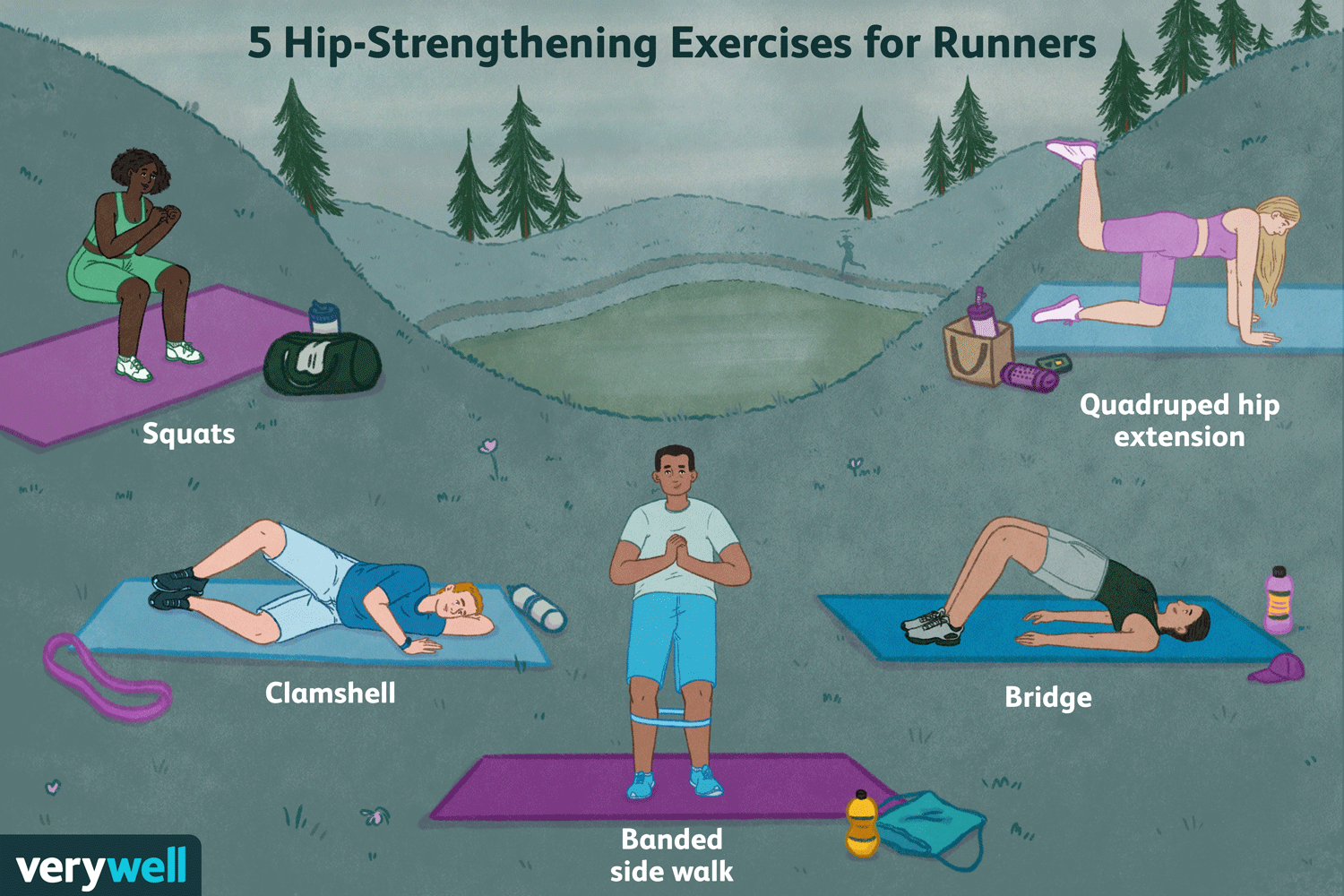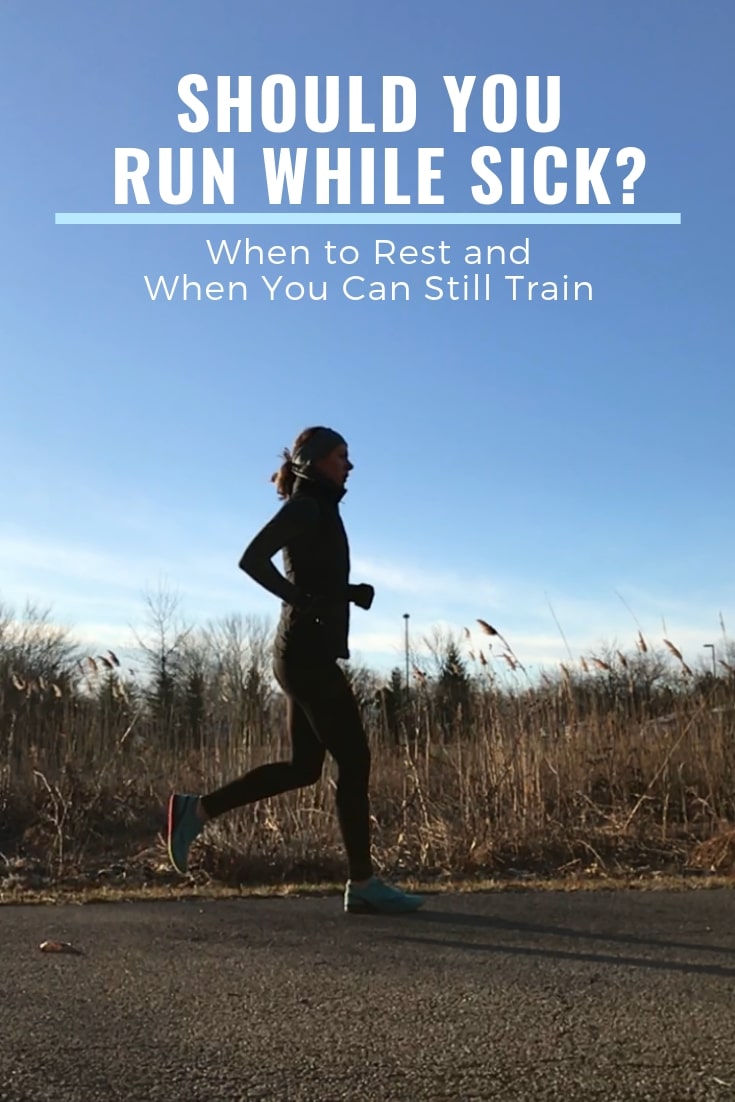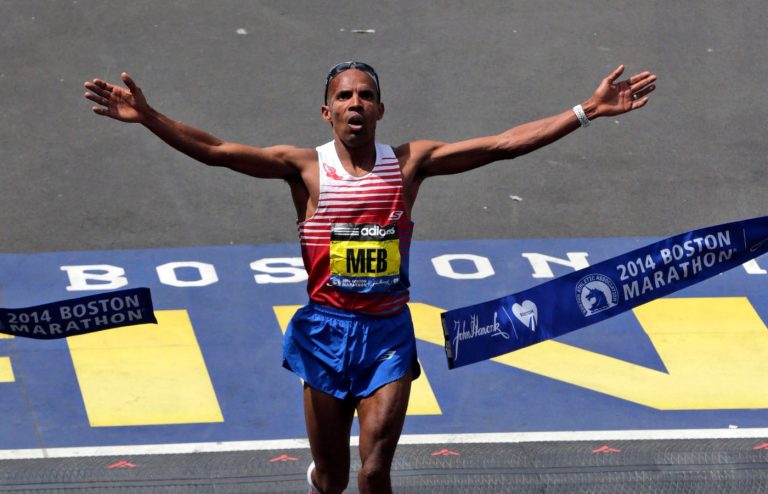Hip Stability Exercises for Runners
Strengthen hip stability important for runners. These exercises can improve performance and prevent injuries.
Hip stability exercises for runners play a crucial role in enhancing performance and reducing the risk of injuries. By focusing on strengthening the muscles around the hips, runners can improve their overall stability and efficiency in their stride. Incorporating these exercises into a regular training routine can lead to better running posture, increased power, and reduced impact on joints.
Whether you are a beginner or a seasoned runner, incorporating hip stability exercises can help you reach your fitness goals and stay healthy. By targeting key muscle groups, such as the glutes and hip abductors, these exercises can improve balance, agility, and overall running mechanics.

Credit: www.trainingpeaks.com
The Importance Of Hip Stability For Runners
For runners, maintaining proper hip stability is crucial for improving performance and reducing the risk of injury. Strong and stable hips help distribute the forces generated during running, enhancing efficiency and preventing imbalances that can lead to pain and discomfort. In this article, we’ll explore why hip stability is essential for runners and introduce some effective exercises to help enhance it.
What Is Hip Stability?
Hip stability refers to the ability of the hip joints, muscles, and ligaments to work together in a balanced manner, providing support and control during movement. It involves maintaining proper alignment and control of the pelvis and femur, which is crucial for runners to maintain a smooth and efficient running gait.
Why Is Hip Stability Important For Runners?
Hip stability is vital for runners as it plays a significant role in controlling the motion of the lower body. When the hips are stable, it reduces the risk of overuse injuries and helps maintain proper alignment, which can enhance running performance. Weak hip stability can lead to compensatory movements, putting additional stress on the knees, lower back, and ankles, increasing the likelihood of injuries.
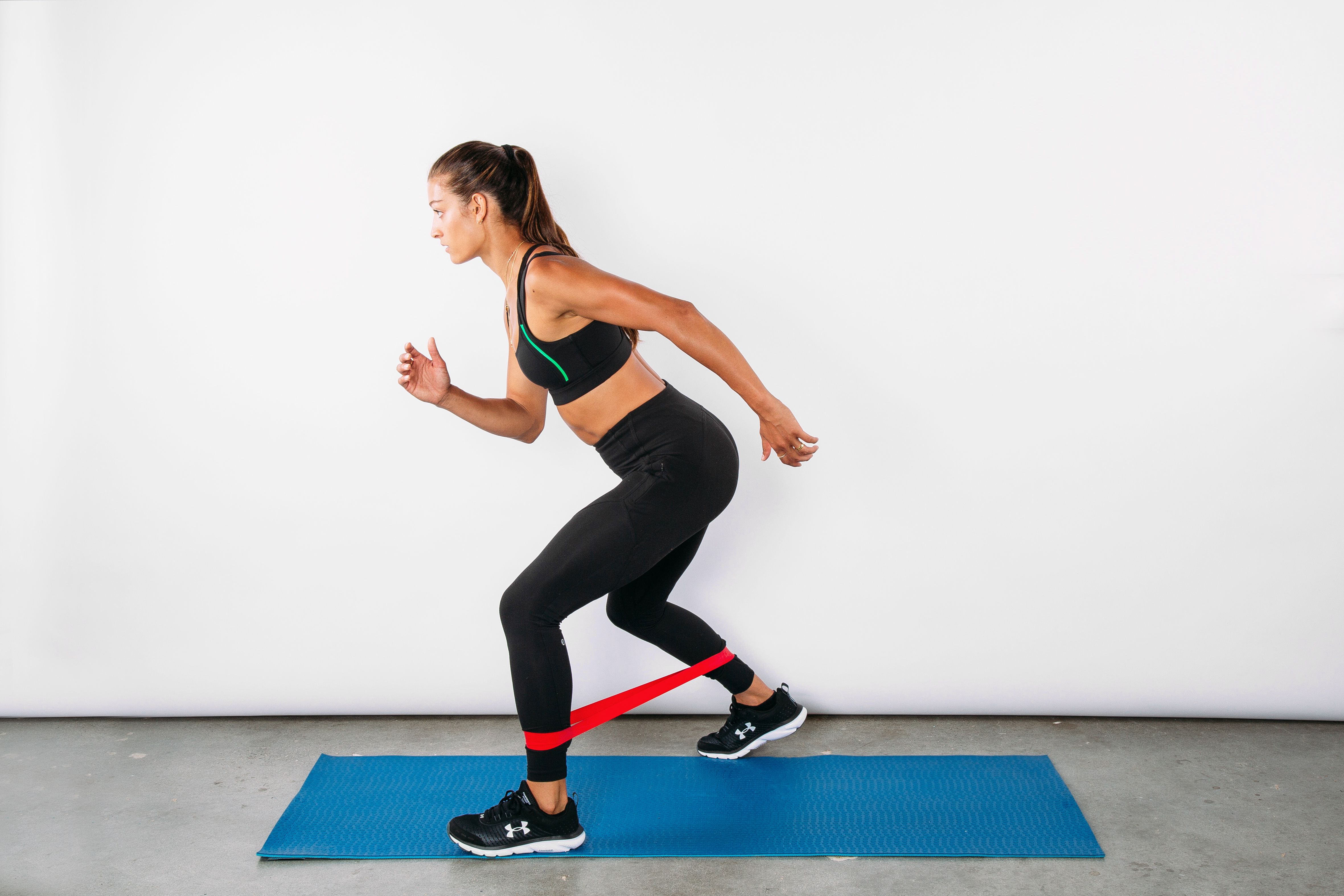
Credit: www.runnersworld.com
Common Causes Of Hip Instability In Runners
Weak Glute Muscles
Weak glute muscles can lead to hip instability in runners, affecting their overall performance. Strengthening exercises like hip bridges can help address this issue.
Tight Hip Flexors
Tight hip flexors are another common cause of hip instability among runners. Stretching exercises such as lunges can help alleviate this tightness and improve hip mobility.
Imbalance In Muscle Strength
An imbalance in muscle strength, particularly between the hip abductors and adductors, can contribute to hip instability. Targeted exercises like clamshells can help restore balance.
Benefits Of Hip Stability Exercises For Runners
Enhancing hip stability through specialized exercises is key for runners to improve performance and prevent injuries. These targeted exercises offer a range of benefits that directly impact running efficiency, injury prevention, and overall athleticism.
Increased Running Efficiency
Hip stability exercises contribute to smoother running mechanics, boosting efficiency and speed. Engaging key muscle groups around the hips improves stride length and reduces energy waste during each step.
Prevention Of Injuries
Strengthening hip muscles helps maintain proper alignment and reduces the risk of common running injuries such as IT band syndrome and hip impingement. Improved stability protects joints from excessive stress.
Improved Balance And Coordination
By enhancing balance and coordination, hip stability exercises ensure that runners can maintain optimal form throughout their gait cycle. This not only enhances running performance but also reduces the likelihood of tripping or falling.
Effective Hip Stability Exercises For Runners
When it comes to running, hip stability plays a crucial role in preventing injuries and maximizing performance. By incorporating effective hip stability exercises into a training regimen, runners can improve their overall strength, balance, and endurance while reducing the risk of overuse injuries.
Bridges
Bridges are a fundamental exercise for strengthening the glutes, hamstrings, and core muscles, which are essential for hip stability. To perform bridges, lie on your back with your knees bent and feet flat on the ground. Lift your hips off the floor, squeezing your glutes at the top, then lower back down. Aim for 3 sets of 12-15 repetitions.
Clamshells
Clamshells target the hip abductor muscles, promoting stability and alignment. Start by lying on your side with your knees bent and feet together. Keeping your pelvis stable, open and close your knees like a clamshell. Perform 2 sets of 15-20 repetitions on each side.
Side Leg Raises
Side leg raises strengthen the hip abductors and improve lateral stability. Lie on your side with legs straight, then lift the top leg toward the ceiling while keeping your hips stacked. Lower the leg back down. Perform 3 sets of 12-15 repetitions per side.
Lunges
Lunges engage the hip flexors, glutes, and quadriceps, enhancing overall lower body strength and stability. Stand with feet hip-width apart, step forward into a lunge position, then return to standing. Alternate legs and aim for 2 sets of 10-12 lunges on each leg.
Single-leg Squats
Single-leg squats challenge hip stability and improve balance. Begin by standing on one leg, then lower your body by bending the knee and hip, keeping the other leg extended in front. Push back up to the starting position. Aim for 2 sets of 8-10 repetitions on each leg.
Incorporating Hip Stability Exercises Into Your Running Routine
When it comes to running, hip stability is a crucial factor in preventing injuries and improving performance. Incorporating hip stability exercises into your running routine can help strengthen the muscles around your hip joint, providing better stability and control during your runs.
Warm-up And Cool-down Exercises
Before and after your run, it’s important to include specific warm-up and cool-down exercises to prepare and recover your hip muscles.
For your warm-up, try these exercises:
- Marching in place for 1-2 minutes, lifting your knees as high as comfortably possible to activate your hip flexors.
- Leg swings: Stand near a wall or support and swing one leg forward and backward, and then sideways for 10-15 swings on each leg. This helps to loosen up your hip joint.
- Glute bridges: Lie on your back with your feet flat on the ground and knees bent. Lift your hips off the ground, squeezing your glutes, and hold for 10 seconds. Repeat for 10 reps, gradually increasing to 15 reps over time.
After your run, cool-down with these exercises:
- Standing quad stretch: Stand tall and bring your right foot towards your glutes, holding for 20-30 seconds. Repeat on the other side.
- Pigeon stretch: Sit on the ground with one leg straight out in front of you and the other leg bent, placing the ankle of the bent leg above the knee of the straight leg. Lean forward until you feel a stretch in your outer hip. Hold for 20-30 seconds on each side.
- Standing hip circles: Stand with your feet hip-width apart and hands on your hips. Circle your hips clockwise and then counterclockwise for 30 seconds each direction. This helps to relax your hip muscles after the run.
Frequency And Duration Of Exercises
To reap the benefits of hip stability exercises, it’s important to be consistent and gradually increase the frequency and duration over time.
Start by performing these exercises twice a week on non-consecutive days. Aim for 2-3 sets of each exercise, with 10-15 repetitions per set. Gradually increase the frequency to 3-4 times a week, and the duration to 3-4 sets of each exercise. Listen to your body and rest as needed between sets and sessions.
Progression And Modification
To continue challenging your hip muscles and promoting stability, it’s essential to progress and modify your hip stability exercises.
Here are some ways to progress and modify your exercises:
- Add resistance: Introduce resistance bands or ankle weights to increase the intensity of your exercises.
- Vary the surface: Incorporate unstable surfaces like a balance board or foam pad to engage more muscles and challenge your balance.
- Explore advanced exercises: Once you have built a strong foundation, consider adding more advanced exercises like lateral band walks or single-leg squats.
Remember to always maintain proper form and technique during exercises. If you experience any pain or discomfort, consult with a healthcare professional or a qualified trainer.
By incorporating these hip stability exercises into your running routine and progressively challenging yourself, you can enhance your running performance and reduce the risk of hip-related injuries. Take care of your hips and enjoy a smoother, more stable running experience!
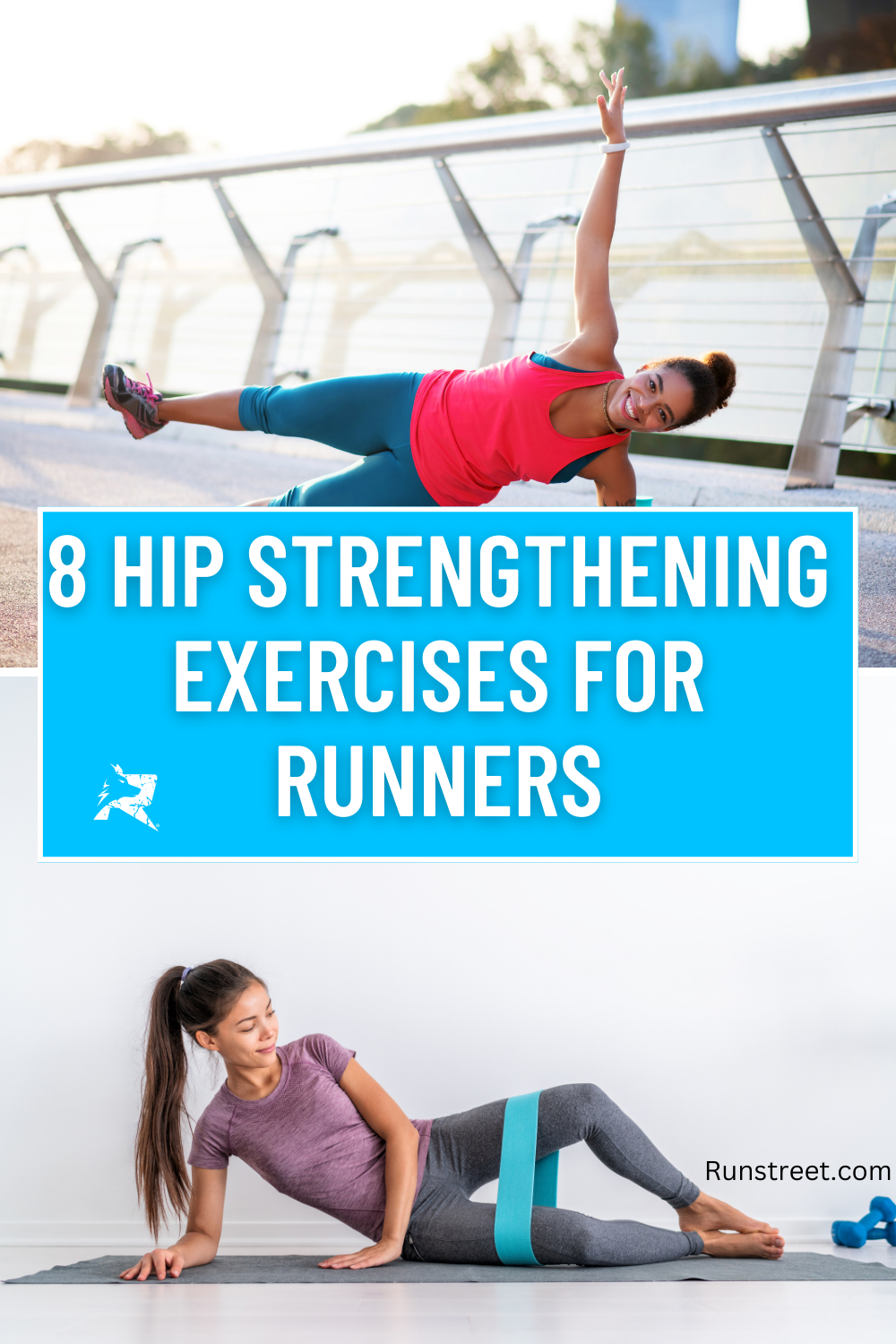
Credit: www.runstreet.com
Frequently Asked Questions On Hip Stability Exercises Runners
What Are The Best Hip Stability Exercises For Runners?
Some of the best hip stability exercises for runners include clamshells, lateral leg raises, and single-leg squats. These exercises help strengthen the muscles around the hips, improving stability and preventing injuries.
How Often Should Runners Perform Hip Stability Exercises?
For optimal results, runners should aim to perform hip stability exercises at least 2-3 times a week. Consistency is key to improving hip stability and preventing any potential issues.
Can Hip Stability Exercises Help Enhance Running Performance?
Yes, hip stability exercises can greatly enhance running performance. By strengthening the muscles around the hips, these exercises improve balance, power, and overall running efficiency. This can lead to better speed, endurance, and reduced risk of injuries.
Conclusion
Incorporating hip stability exercises into your running routine can significantly improve your performance and reduce the risk of injury. By focusing on strengthening the muscles around the hip joint, you can enhance your stability, balance, and overall running efficiency. These exercises are a valuable addition to any runner’s training regimen, promoting better form and endurance.
Start incorporating these exercises into your routine and experience the difference it can make in your running journey.

